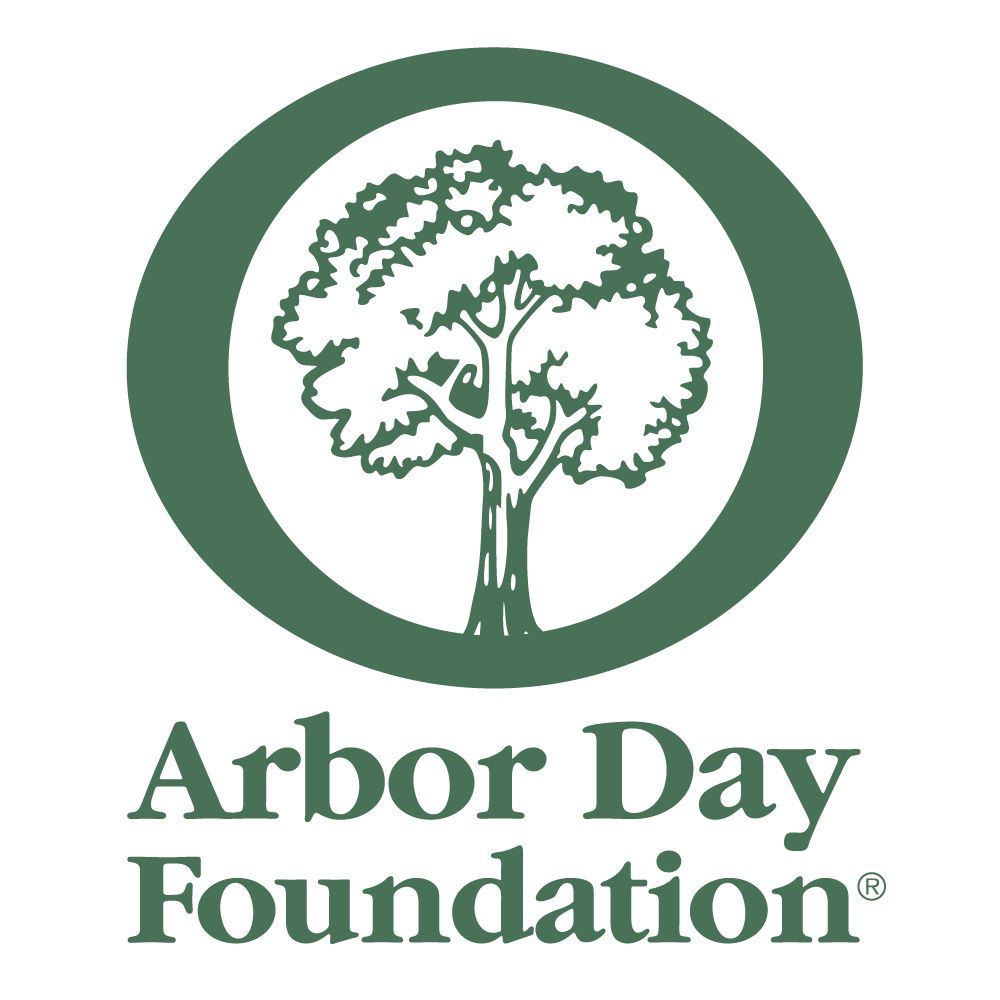|
News and Blog Articles
|
|
You’ve probably heard that you should prune your trees in the fall, before the first freeze. In fact, one of the most common myths of pruning is that all trees should be pruned just before winter. But the truth is, fall may actually be the worst time of year to prune! So what is the best time to prune? That depends on what kind of pruning you want to do. Sometimes, the best time to prune a tree is in the dead of winter, or in the middle of summer, or even early spring, like it is now. What is Pruning?Pruning is an important part of maintaining a tree's integrity and health. There are a couple different types of pruning, but the most common are crown cleaning and crown thinning. Crown cleaning is a pruning technique that removes dead, dying, or diseased branches so they don't harm or hinder healthy ones. This is the type of pruning that can be done year-round, and is safe to do in the fall. Crown thinning, on the other hand, is used to create more space between branches. This gives them more room to grow, reduces the risk of any branch getting crowded out of sunlight, and also prevents branches from damaging each other from repeated contact and friction. Why is Fall Pruning Bad?The myth that the best time to prune is in the fall comes from the idea that you should prune a tree while it’s dormant. That line of thinking is actually correct – pruning a tree while it’s “asleep” for the winter encourages new growth come springtime. The important distinction here is that you want to prune only after a tree has gone dormant for the winter, never before. Pruning live growth (which just means pruning away branches that are still alive and healthy), while good for the tree in the long run, does create “wounds” where you cut away branches or parts of branches. In the fall, your tree is winding down in preparation for winter. During this time, it won’t have the energy to seal those wounds. In the cold, winter months, this isn’t a problem, because the low temperatures discourage rot and decay. Most pests and fungi are also dormant for the winter, so they aren’t likely to infect a tree through an open wound. But in the fall, the weather is just cool, and generally damp. It’s the happiest time of year for a variety of nasty pests and fungi, and is also a great environment for rot and decay. Oak trees are especially vulnerable from April until July to oak wilt, one of the deadliest tree diseases. Basically, pruning in the fall is leaving your wounded tree vulnerable to infections and infestations that may actually kill it. Winter PruningWith the protective barrier of cold temperatures and dormant pests, winter is usually the “best time to prune.” If you’re looking to thin out your branches, trim back wayward limbs, or just improve the overall health of your tree, then waiting until the dormant months is probably your best bet. The rule of thumb when it comes to pruning in winter is to wait until after the coldest days have passed. For the Athens area, the coldest part of winter is in January and early February, which makes the best time to prune in winter late February and early March. Summer PruningWinter isn’t the only time you can prune live growth, though. If you’re looking to redirect some growth, then late spring or early summer is the best time to do it. Redirecting growth basically just means if you want to encourage your tree to grow in a different direction – like say, away from the powerlines or your roof. Redirecting can also refer to if you want to encourage a specific leader to become dominant on a tree with more than one trunk. So, for example, crepe myrtles have multiple leaders (trunks) that grow from the base and out into a shrub-like shape. If you want to encourage the tree to grow taller rather than wider, you can trim back some of the leaders so one becomes stronger. This will encourage the tree to grow into a more stereotypical “tree” shape. Summer is also a good time to remove defective limbs or branches that have grown too heavy to support themselves any longer. Any wounds created by removing limbs will be easily taken care, as the tree will have plenty of energy to spare in its most active period. Flowering Tree PruningWhen it comes to trees that flower (like Bradford pears and crepe myrtles), the best time to prune actually depends on the blooms. If your tree blooms in the spring, then pruning should be done after all the flowers have fallen. If your tree blooms in late summer, then pruning should be done in winter, or early spring at the latest. If you have a tree that you want to prune, or a tree you think needs pruning, but you aren’t sure where to start, when to start, or what to do, feel free to give Classic City Arborists a call! We offer free estimates, and will send our certified arborist to look at your tree and give his professional recommendation, as well as get you a quote for how much it would cost for us to do the work for you. AuthorEmily Casuccio is sister and sister-in-law to Rebekah and Scott Rushing, and has over half a decade of experience in copywriting, copyediting, proofreading, and developmental storyboarding. She's worked with both published and undiscovered authors on both fiction and nonfiction, and takes pride in supporting local businesses. Her passion lies in the written word and helping authors of all capacities realize their dreams and achieve their fullest potential. To learn more about her, read samples of her work, or contact her, visit her online portfolio.
0 Comments
National Invasive Species Awareness Week (or NISAW, for short), is actually an international movement that aims to raise awareness of the dangers of invasive species all across the world. NISAW 2021, Part I starts on February 22 and goes through the 28. This week is all about spreading awareness about invasive species and promoting legislative changes at local, state, and federal levels. Part II will be May 15 through 22, and will continue these efforts, but will also include events that bring communities together to remove invasive species. In the spirit of NISAW this week, we thought we’d do our part in getting the word out on one of the biggest threats to our beloved trees. What Are Invasive Species?You may remember learning this term back in high school, but basically, invasive species are plants or animals that have been introduced to an ecosystem they aren’t native to. Not all “invaders” will survive in a new environment, because they haven’t evolved or adapted to the conditions there. But sometimes, the invading species actually takes really well to their new home. Consider this: the invaders decide they really, really like eating a specific other species in this new environment. The native species in the area aren’t evolved or adapted to defend against the new threat, so their numbers suffer. Plus, since the invaders aren’t native to the area, they won’t have any natural predators to keep their numbers within reason. So, you end up with an overpopulation of the invasive species decimating the populations of native species. What Are Some Invasive Species in Georgia?Probably the most well-known invasive species in our area is kudzu. You’ve seen kudzu blanketing trees around town, covering ground along the highway, and even taking over powerlines. Kudzu is a vine native to Japan. It was introduced to the United States in the late 1800s as a new way to control soil erosion. Kudzu is a climbing vine, and it uses existing structures to reach for more sun exposure and access to rainwater. In doing so, it blocks these resources from whatever tree or plant it’s growing on. In its natural habitat, with insects that feed upon it, kudzu is just another vine in the forest. But in the States, we don’t have those insects. Our insects actually tend to avoid kudzu. So, with nothing keeping the kudzu in check, it grows wildly in every direction, literally choking our native trees and plants. Another major invasive species in our area is the Chinese Privet. You may not have heard of it, but you’ve definitely seen it, because it’s everywhere. This shrub grows quickly into a dense thicket that blocks light and water from reaching anything beneath it. It also tends to leech nutrients from the soil around it, making the surrounding area less hospitable to native species. When we do underbrush clearing for a customer, Chinese Privet is usually one of the culprits clogging up their property. It’s difficult to get rid of, so if you suspect you’ve got some Chinese Privet spreading, give us a call so we can remove it before it becomes a problem! Other common invasive tree species in the Athens area specifically are the Chinaberry tree, Mimosa tree, Paulownia tree, and Tallow tree. How Can You Help?
If you think you have an invasive species in your yard, or are worried about the health of any of your trees, check out our guide on some simple signs that your tree is in decline. Or, contact us for a free quote! AuthorEmily Casuccio is sister and sister-in-law to Rebekah and Scott Rushing, and has over half a decade of experience in copywriting, copyediting, proofreading, and developmental storyboarding. She's worked with both published and undiscovered authors on both fiction and nonfiction, and takes pride in supporting local businesses. Her passion lies in the written word and helping authors of all capacities realize their dreams and achieve their fullest potential. To learn more about her, read samples of her work, or contact her, visit her online portfolio. Most of us have probably heard of Arbor Day before, but fewer and fewer people seem to celebrate it. The holiday has faded into the background over the years, taking a backseat to the more famous Earth Day. And while they’re similar, Arbor Day has its own history and traditions separate from Earth Day. So, in honor of Georgia’s Arbor Day this Friday, let’s take a minute and learn about the holiday! Where Did Arbor Day Come From?Arbor Day was founded in 1872 by a humble newspaper editor by the name of Julius Sterling Morton. Morton, along with many other pioneers, noticed the lack of trees in Nebraska almost immediately after leaving Detroit to travel there. While he missed having trees around like he used to, Morton also knew how important trees were to a functioning society. At the time (and now), trees were an important source of fuel and building materials. They also acted as windbreaks to protect towns from harsher weather, and prevented soil erosion, which in turn meant better conditions for farming. Soon after arriving, Morton began advocating for the community to plant as many trees as possible. He would eventually become the Secretary of the Nebraska Territory, a position he quickly used to establish a tree-planting holiday, which we now know as Arbor Day. The first Arbor Day was celebrated on April 10th, 1872. Nebraska awarded prizes to the communities and individuals with the “largest number of properly planted trees” for the day. By most estimates, more than 1 million trees were planted in Nebraska on the first Arbor Day. What Is Arbor Day Today?Nowadays, nearly 150 years later, Arbor Day is still around. Communities come together on this special holiday to reflect on the importance of trees and work together to plant more. New research has proven that trees, in addition to producing the oxygen we breathe and supporting our environments, actually have a multitude of benefits. These include sheltering homes and towns from hot summer temperatures, encouraging creativity, and improving both our mental and physical health.
When Is Arbor Day?Nationally, Arbor Day is celebrated on the last Friday in April. In Nebraska, where it began, Arbor Day is actually a civic holiday. Over the years, many other states began to adopt Arbor Day, choosing their own dates to celebrate it. Now, all 50 states celebrate Arbor Day at some point early in the year. In Georgia, we celebrate Arbor Day on the third Friday in February. How Can You Celebrate Arbor Day?The traditional way to celebrate Arbor Day is by planting a tree. After all, the holiday is set aside for us to remember the importance of trees. But there are lots of other ways you can celebrate trees this Arbor Day, if planting one isn’t an option for you. Here are just a few:
AuthorEmily Casuccio is sister and sister-in-law to Rebekah and Scott Rushing, and has over half a decade of experience in copywriting, copyediting, proofreading, and developmental storyboarding. She's worked with both published and undiscovered authors on both fiction and nonfiction, and takes pride in supporting local businesses. Her passion lies in the written word and helping authors of all capacities realize their dreams and achieve their fullest potential. To learn more about her, read samples of her work, or contact her, visit her online portfolio. For our next Tree of the Month, we’re featuring one of the biggest trees in North America, aptly named the American Sycamore. These behemoths can reach heights over 100 feet on average, with trunks measuring between 5 and 6 feet in diameter. Platanus occidentalis is also known as the Eastern Sycamore, American Plane Tree, Plane Tree, Buttonwood, and Buttonball Tree. While these trees can be found throughout the Southeast, they’re native to North Carolina. They prefer full sun exposure with plenty of water, and are naturally found along streams and bottom lands. Once fully established, these Sycamores are moderately drought-tolerant. In addition to being one the largest trees in North America, American Sycamores are also one of the fastest-growing. They can add up to 6 feet to their overall height each year. As they’re getting started, these trees have a pyramidal shape. But, as they age, the midsection fills out nicely. Though eventually reaching a rounded shape, the crown of the American Sycamore is asymmetrical, with widely-spaced, crooked branches growing randomly in all directions. One of this species’ defining features is its mottled, flaky bark. The outermost layers, which are generally a darker greyish-brown, lose their elasticity and break off in irregular chunks, revealing lighter grays, browns, and whites underneath. This flaking will lessen as the tree reaches full maturity and its growth rate slows down. American Sycamore leaves are generally wider than they are long, with 3 to 5 pointed lobes. In the Spring, the medium- to dark-green leaves are accompanied by very tiny red and yellow flowers that grow in clusters. Sycamores grow both male and female flowers on the same tree, so they can self-pollinate. As the weather warms, the flowers will develop large, globular fruits nearly 2 inches wide. Each fruit dangles off its own rather thin stalk. They make popular treats for birds, squirrels, and other wildlife, who will happily pluck them from their branches or steal them after they’ve fallen. Though the fruits will eventually dry out and fall to the ground, they are what’s called achenes, which means they retain their seeds rather than expelling them. If you cut one if half, you’ll find that the dried exterior is attached to feathery, fluffy seeds inside that are designed to be eaten or blown away in the wind. While the fruits of the Sycamore are one of the things that make them attractive, they’re also one of the reasons these trees don’t make great lawn ornaments. Most trees just drop dried leaves in the Fall, which can still be a pain to clean up, but is pretty normal. Sycamores, on the other hand, scatter their large, dried seed pods all over your yard. These trees also present problems when it comes to their size. Many homeowners don’t realize quite how big an American Sycamore can get, and naively plant one near their driveway or out in the backyard. And while they are generous shade trees—so much so that they can save you money on your power bill in Summer by keeping your house cooler—they also block the sun from reaching any plants underneath them. Those widespread branches can also easily interfere with nearby powerlines. Did You Know?The largest American Sycamore on record measured 174 feet tall, and nearly 13 feet in diameter! But the real threat of the Sycamore is the one under your feet. While it’s easy to forget to account for the roots when it comes to planting any species, failing to do so with a Sycamore can have drastic (and expensive) consequences. The roots of the American Sycamore spread deep and wide, and are notorious for damaging underground piping, cracking pavement and driveways, and even rupturing septic tanks. Definitely do your research and plan ahead if you’re thinking of adding one of these beautiful trees to your landscape! AuthorEmily Casuccio is sister and sister-in-law to Rebekah and Scott Rushing, and has over half a decade of experience in copywriting, copyediting, proofreading, and developmental storyboarding. She's worked with both published and undiscovered authors on both fiction and nonfiction, and takes pride in supporting local businesses. Her passion lies in the written word and helping authors of all capacities realize their dreams and achieve their fullest potential. To learn more about her, read samples of her work, or contact her, visit her online portfolio. |
Categories
All
Archives
January 2023
|
|
23 Whatever you do, work at it with all your heart, as working for the Lord, not for human masters,
24 since you know that you will receive an inheritance from the Lord as a reward. It is the Lord Christ you are serving.
Colossians 3:23-24
24 since you know that you will receive an inheritance from the Lord as a reward. It is the Lord Christ you are serving.
Colossians 3:23-24




